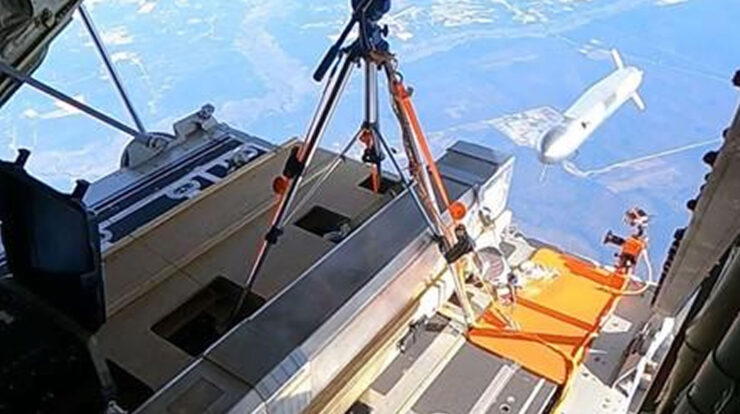
The U.S. Air Force Special Operations Command (AFSOC) intends to arm drones such as the MQ-9 Reaper with smaller cruise missiles. Should this be realized, these drones could potentially function as long-range attack vehicles similar to conventional contemporary fighter jets.
Due to advancements in miniaturizing cruise missiles, such as Leidos’ ‘Black Arrow’, it’s now feasible to arm drones with this kind of firepower. As a result, AFSOC conducted tests using the compact Black Arrow missile on an AC-130 gunship in March, demonstrating that the concept is viable.
According to
Defense One
AFSOC’s primary objective is to enhance capabilities without acquiring additional costly airplanes. This improvement will allow AFSOC to extend its operations beyond its present main focus on combating adversaries with limited aerial defense systems (such as terrorists).
“If having access to a gunship, or an MQ-9 Reaper drone, or even an OA-1K Skyraider II equipped with a small cruise missile capable of traveling up to 400, 500, or even 600 miles to strike a target would be beneficial, then such a capability would certainly be valuable for a combat commander,” Lieutenant General Michael Conley stated to journalists during a briefing.
The Global SOF Foundation’s SOF Week
an event earlier this month.
Reducing workload on troops
It is argued that better weaponry of this kind is now needed in the wake of groups like the Houthis in Yemen fielding more advanced defenses and tactics. Additionally, US special forces are increasingly being pulled into more global theaters across Asia, Europe, and the Middle East.
In order to achieve this, the Air Force intends to utilize artificial intelligence for decreasing the operational burden on personnel and accelerating processes such as target recognition. Additionally, the aviation division within the U.S. Department of Defense aims to collaborate with firms similar to
Leidos
, which has already assisted in testing missile integration. The Air Force Special Operations Command (AFSOC) is also exploring technology with both commercial and military applications, particularly those coming from startup companies, aiming to accelerate innovation cost-effectively.
But the task at hand is far from easy. Adding cruise missiles to an operational drone isn’t as simple as bolting them on. Such weapon systems will need to be integrated with the drone’s software and battle management systems. Other considerations, like safety reviews, testing on military ranges, and coordination with the Pentagon, will also pose potential challenges.
“Equipping an active-duty aircraft with a cruise missile along with the battle management system, and conducting tests at a government facility using an AFSOC team, differs significantly from testing on a rented plane solely for demonstration purposes. Numerous safety inspections and clearances are necessary,” said an anonymous Leidos representative.
Defense One.
“The deployment of The Black Arrow on an MQ-9 represents a natural evolution and would significantly boost capabilities,” the official noted.
Futureproofing AFSOC
If successful, the proposal will enable AFSOC to adapt to a changing world in which enemies are becoming more sophisticated daily. The world is also becoming more volatile, and access to resources like funding is increasingly strained.
With the exercise, the AFSOC is attempting to turn older platforms like the MQ-9 Reaper into smarter, longer-reaching strike assets using AI and compact
cruise missiles.
“We’re carefully examining the capabilities being developed by [the People’s Republic of China] and Russia,” Conley stated. “However, this technology eventually spreads. It gets transferred to various nations where we interact or have operations nearby. The current situation in the larger Yemen region shows us how this pattern is unfolding,” he further explained.
“Generally speaking, activities such as crisis management have increased. When examining the situation throughout the larger Middle Eastern region at present, we find ourselves with an extended engagement. These kinds of responsibilities keep our team quite occupied,” elaborated Conley.






